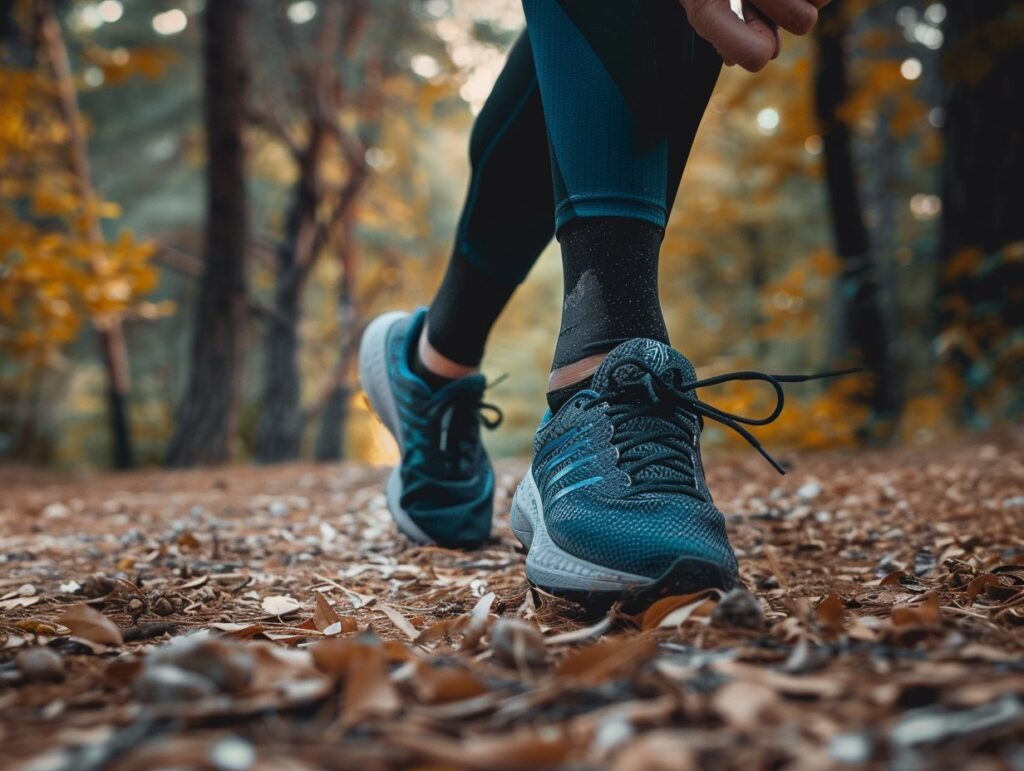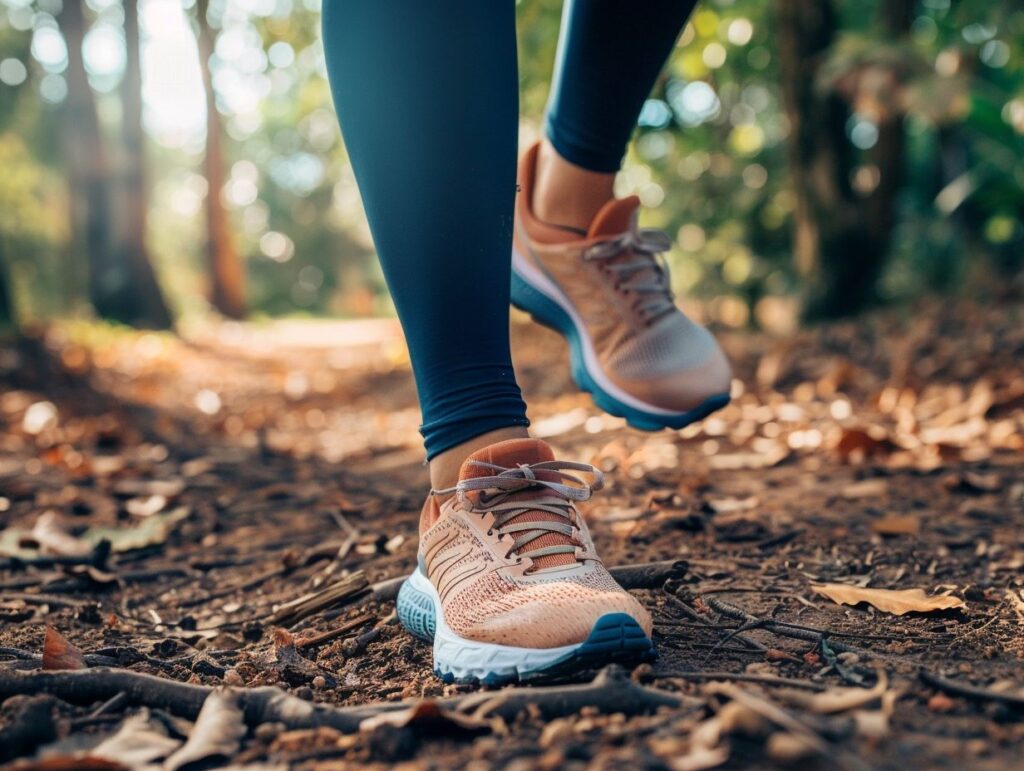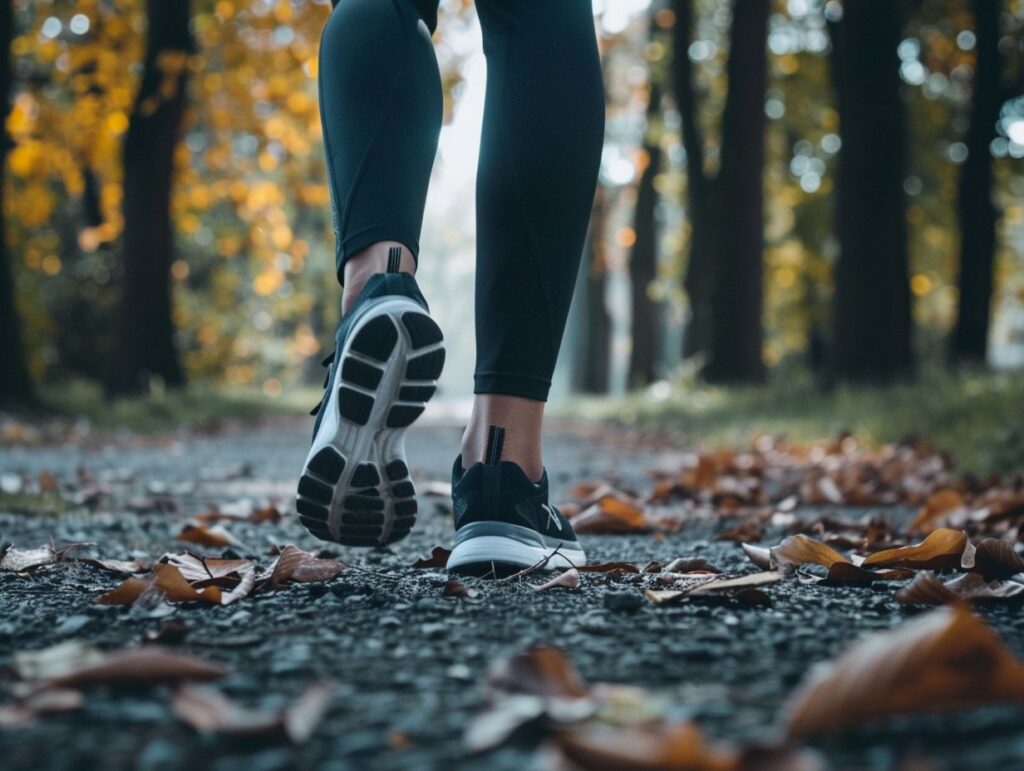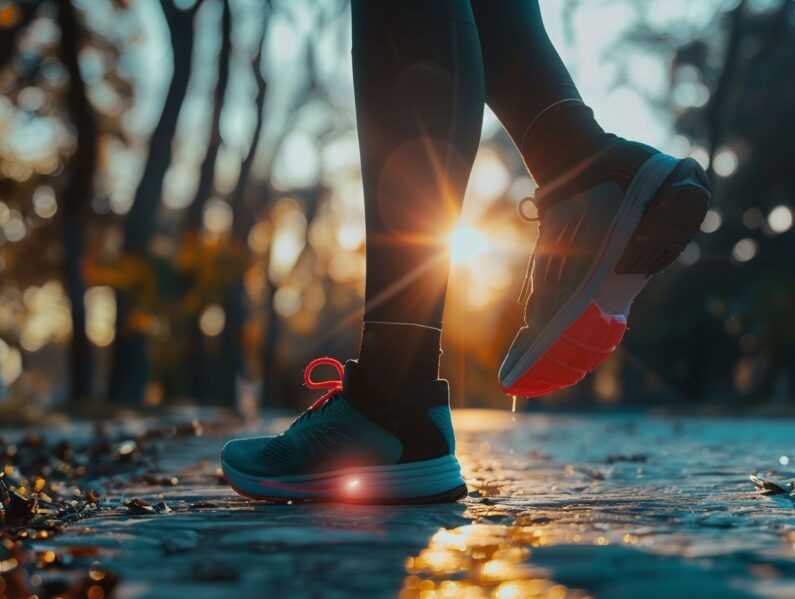Experiencing leg pain after running? There are several potential causes, including muscle fatigue, overuse injuries, poor running form, inadequate warm-up or cool-down, and underlying medical conditions.
In this article, we will explore these reasons in depth and provide tips on how to prevent leg pain after running. From proper warm-up and cool-down techniques to strengthening exercises and choosing the right running shoes, we’ve got you covered.
If you find yourself with leg pain, we’ll also discuss effective treatment options such as rest, ice, compression, and physical therapy. Keep reading to keep those legs feeling strong and pain-free!
What Causes Leg Pain After Running?
Leg pain after running can be caused by various factors including muscle fatigue, overuse injuries, poor running form, inadequate warm-up or cool-down, and underlying medical conditions.
Muscle Fatigue and Strain
Muscle fatigue and strain are common culprits of leg pain after running, often leading to soreness, lactic acid build-up, muscle damage, and delayed onset muscle soreness (DOMS) due to improper body mechanics.
When muscles undergo intense physical activity like running, they rely heavily on energy production through aerobic and anaerobic pathways. As the demand for energy increases, the body breaks down glycogen to fuel muscle contraction. This process results in the release of lactic acid, which can accumulate in the muscles, contributing to the burning sensation often felt during prolonged exercise.
The repetitive impact of running can cause microscopic muscle damage, leading to inflammation and soreness. Proper rest and recovery play a crucial role in allowing the muscles to repair and strengthen, reducing the risk of ongoing strain and potential injuries.
Overuse Injuries
Overuse injuries can result in leg pain after running, with conditions such as shin splints, knee pain, calf pain, hamstring pain, quad pain, and IT band pain being common afflictions among runners.
Runners may notice symptoms like tenderness, swelling, or aching in the affected areas. Shin splints typically manifest as sharp pain along the shin bone, while knee pain can vary from mild discomfort to severe agony. Calf pain might feel like tightness or cramping, hindering smooth movements. Hamstring pain often presents as a dull ache in the back of the thigh, impacting flexibility. Quadriceps pain may arise from overtraining or muscle imbalances, causing discomfort in the front of the thigh. IT band pain can lead to sharp stinging sensations on the outer part of the knee or hip.
To prevent these injuries, maintaining a balanced training routine, incorporating rest days, proper warm-ups, stretching, strength training, and cross-training are essential. Focusing on gradual progression, listening to the body’s signals, and investing in quality footwear can help runners reduce the risk of overuse injuries and improve overall performance.
Poor Running Form
Poor running form can contribute to leg pain after running as it places undue stress on muscles, tendons, and joints, leading to increased muscle fatigue and higher risk of injury.
Understanding the role of biomechanics in running helps in comprehending how poor form can lead to these issues. Biomechanics focuses on analyzing body movements during various activities like running, highlighting the importance of proper body alignment and movement patterns. By maintaining correct body mechanics while running, individuals can reduce the impact on their legs and lower body, thus decreasing the chances of developing pain and injuries. Correcting running form not only aids in injury prevention but also plays a crucial role in minimizing muscle fatigue, allowing for more efficient and enjoyable runs.
Inadequate Warm-Up or Cool-Down
Skipping or inadequately performing warm-up and cool-down routines can lead to leg pain after running by increasing the risk of muscle, tendon, and ligament strain due to lack of proper stretching and preparation.
Stretching plays a crucial role in ensuring the muscles, tendons, and ligaments are adequately warmed up and prepared for the physical demands of running. Gentle dynamic stretches such as leg swings, hip circles, and calf raises help improve blood circulation, flexibility, and range of motion.
Cooling down after a run is equally vital to allow the body to gradually transition to a resting state. Post-run static stretches like quad stretches, hamstring stretches, and calf stretches help alleviate muscle tightness and reduce the chance of injury by promoting recovery and muscle flexibility.
Medical Conditions
Certain medical conditions such as inflammation, dehydration, obesity, or age-related issues can exacerbate leg pain after running, highlighting the importance of addressing underlying health concerns.
These factors play a significant role in the recovery process and overall well-being of a runner. For instance, inflammation in the joints or muscles can lead to prolonged discomfort and hinder healing. Proper hydration levels are crucial for maintaining muscle function and reducing the risk of cramps and strains. Body weight can also impact the amount of stress placed on the legs during running, potentially increasing the likelihood of pain. Age-related changes in muscle elasticity and bone density may contribute to post-run soreness.
It’s essential for runners to pay attention to these factors and seek medical advice if they experience persistent or severe leg pain to prevent further complications.
How to Prevent Leg Pain After Running?
Preventing leg pain after running involves key strategies such as proper warm-up and cool-down routines, gradually increasing intensity and distance, incorporating strengthening and stretching exercises, wearing appropriate running shoes, and prioritizing adequate rest and recovery.

Proper Warm-Up and Cool-Down
Engaging in a thorough warm-up and cool-down routine is essential to prevent leg pain after running, as it prepares the muscles for activity, aids in injury prevention, and promotes proper hydration during exercise.
A dynamic warm-up typically involves movements that mimic the running motion to gradually raise the heart rate and increase blood flow to the muscles. Examples include butt kicks, high knees, leg swings, and hip circles.
On the other hand, static cool-down stretches focus on relaxing the muscles and promoting flexibility. Key stretches for runners may include calf stretches, hamstring stretches, quad stretches, and hip flexor stretches. These stretches should be held for 15-30 seconds to allow the muscles to lengthen and release tension.
Gradual Increase in Intensity and Distance
Gradually increasing the intensity and distance of your runs is crucial to prevent leg pain by avoiding overtraining, ensuring sustainable training volume, and enhancing overall endurance levels over time.
By incorporating the principle of progressive overload into your running routine, you are essentially challenging your body to adapt and grow stronger. This gradual increment in intensity and distance not only helps in preventing overtraining but also plays a significant role in reducing the risk of injury.
One effective training tip is to follow a structured training plan that includes a mix of easy runs, tempo runs, intervals, and long runs. This varied approach helps in improving different aspects of your running fitness while preventing monotony and reducing the chances of overuse injuries.
Strengthening and Stretching Exercises
Incorporating strengthening and stretching exercises into your routine can help prevent leg pain after running by improving muscle flexibility, strengthening key muscle groups, and enhancing the resilience of tendons and ligaments.
- Exercises targeting the calves, hamstrings, quadriceps, and hip flexors are especially beneficial for runners. For example, calf raises can strengthen the calf muscles, while hamstring stretches like the seated hamstring stretch or standing hamstring stretch can improve flexibility.
- Squats and lunges are great for working the quadriceps, and hip flexor stretches such as the kneeling hip flexor stretch can help prevent strain in this area.
By focusing on these specific muscle groups, runners can maintain proper form, prevent injuries, and enhance their overall performance.
Proper Running Shoes
Choosing the right running shoes can play a pivotal role in preventing leg pain post-running by supporting proper biomechanics, cushioning impact forces, and reducing the risk of foot-related injuries.
Understanding your foot mechanics is crucial when selecting running shoes. For individuals with overpronation, stability shoes with motion control features can help maintain proper alignment. On the other hand, those with neutral pronation may benefit from cushioned shoes that offer support without interfering with their natural gait.
Consider the terrain you primarily run on – trail runners designed for off-road paths provide added traction and protection. Investing in high-quality footwear not only reduces the risk of injuries but also optimizes your running performance.
Rest and Recovery
Prioritizing adequate rest and recovery is essential to prevent leg pain after running, as it allows for muscle repair, replenishes hydration levels, and reduces the risk of prolonged muscle soreness and injuries.
Taking steps to ensure proper hydration is crucial; replenishing fluids lost during the run helps maintain optimal muscle function and aids in the body’s recovery process.
In addition, consuming a balanced post-run meal rich in protein and carbohydrates provides the necessary nutrients to repair and build muscle tissue.
Adequate sleep is equally important, as it is during rest that the body undergoes repair and growth, essential for muscle recovery.
Implementing active recovery techniques such as light stretching or foam rolling can also help alleviate muscle tightness and prevent injury, ultimately optimizing performance and reducing discomfort in the post-run period.
How to Treat Leg Pain After Running?
Addressing leg pain after running involves rest and ice therapy, compression and elevation, over-the-counter pain relief, physical therapy, and medical treatment for underlying conditions to alleviate discomfort and expedite recovery.

Rest and Ice
Rest and ice application are fundamental treatments for leg pain after running, aiding in muscle recovery, reducing inflammation, and alleviating muscle soreness to promote healing and minimize discomfort.
It is crucial to allow your muscles to rest adequately after a run to prevent overuse injuries and promote overall recovery. Resting allows the muscles to repair and rebuild, ultimately leading to strength gains and improved performance in the long run.
When it comes to applying ice packs, remember the importance of timing; immediate application within the first 20 minutes after running can effectively constrict blood vessels and reduce swelling. As a general guideline, aim to apply ice for around 15-20 minutes at a time, repeating every 2-4 hours for the first 48 hours post-exercise.
Compression and Elevation
Utilizing compression garments and elevating the affected leg can aid in improving blood flow, accelerating muscle recovery, reducing swelling, and enhancing overall healing post-running.
Compression therapy works by applying pressure to the legs, promoting better circulation and preventing blood from pooling in the lower extremities, which is crucial after a high-impact activity like running. This method also helps facilitate lymphatic drainage, clearing out toxins and metabolic waste that can contribute to muscle soreness.
When combined with proper leg elevation, which further assists in reducing edema and inflammation, the benefits multiply. To optimize the effectiveness, ensure the compression garment fits snugly but not too tight, and elevate the leg above the heart level for around 20-30 minutes several times a day post-workout.
Over-the-Counter Pain Relief
Over-the-counter pain relief medications can be effective in alleviating leg pain after running by reducing inflammation, easing muscle soreness, and expediting the recovery process for runners.
These medications, such as ibuprofen or acetaminophen, work to block pain signals in the brain and reduce swelling in the affected muscles. Ibuprofen, for example, is known for its anti-inflammatory properties, which can help decrease pain and swelling associated with running injuries. It is typically recommended to take ibuprofen with food to minimize stomach irritation and to follow the recommended dosage instructions based on the individual’s weight and severity of pain.
It’s crucial to be cautious when using these medications long-term, as they can have potential side effects such as gastrointestinal issues or kidney problems if not used properly.
Physical Therapy
Engaging in physical therapy sessions can aid in the rehabilitation process post-running, facilitating injury recovery, improving strength, flexibility, and addressing underlying biomechanical issues contributing to leg pain.
This specialized form of therapy involves a combination of rehabilitation exercises, tailored stretching routines, and targeted strength training to enhance muscle recovery and correct any musculoskeletal imbalances.
By working with a qualified physical therapist, individuals can receive personalized guidance on developing a comprehensive rehabilitation plan that specifically targets their unique needs and goals.
Seeking professional guidance is crucial as it ensures that the physical therapy program is tailored to one’s current fitness level, injury severity, and overall health status, ultimately leading to more effective and efficient recovery outcomes.
Medical Treatment for Underlying Conditions
In cases of persistent or severe leg pain after running, seeking medical treatment from sports medicine specialists can aid in diagnosing underlying conditions, devising a tailored treatment plan, and facilitating a swift recovery for runners.
Consulting healthcare professionals is crucial as they have the expertise to conduct a thorough evaluation to identify the root cause of the leg pain. Sports medicine specialists play a vital role in creating personalized care plans that may include imaging tests like X-rays or MRIs to assess any structural damage. Based on the diagnosis, treatment options such as physical therapy, orthotics, or even surgical interventions may be recommended to address issues like stress fractures, tendonitis, or muscle strains effectively.”
Frequently Asked Questions

Why do my legs hurt after running?
Running is a high-impact activity that puts a lot of stress on your leg muscles. This can cause micro-tears in the muscle fibers, leading to soreness and discomfort.
What are some common causes of leg pain after running?
Aside from muscle fatigue, leg pain after running can also be caused by improper form, inadequate warm-up or cool-down, dehydration, and underlying conditions such as shin splints or tendinitis.
How can I prevent leg pain after running?
To prevent leg pain after running, make sure to properly stretch and warm up before your run, maintain good running form, gradually increase your mileage and intensity, stay hydrated, and listen to your body for any signs of overexertion.
What should I do if my legs hurt after running?
If you experience leg pain after running, it is important to rest and allow your muscles to recover. You can also try icing the affected areas, taking a hot bath, and gently stretching to alleviate the discomfort.
How long does it take for leg pain to go away after running?
The duration of leg pain after running can vary depending on the severity of the muscle soreness and the individual’s recovery process. Generally, mild soreness should subside within a day or two, while more intense pain may take several days to a week to fully recover.
When should I seek medical attention for leg pain after running?
If your leg pain persists for more than a week, becomes increasingly severe, or is accompanied by swelling, redness, or numbness, it is recommended to seek medical attention as it may be a sign of a more serious injury or condition.

My passion for martial arts goes beyond practice; it is a philosophy that shapes my writing, bringing a distinctive edge to my narratives and advice. I hold black belts in two martial arts disciplines and have competed internationally, experiences that enrich my storytelling with authenticity and excitement.

